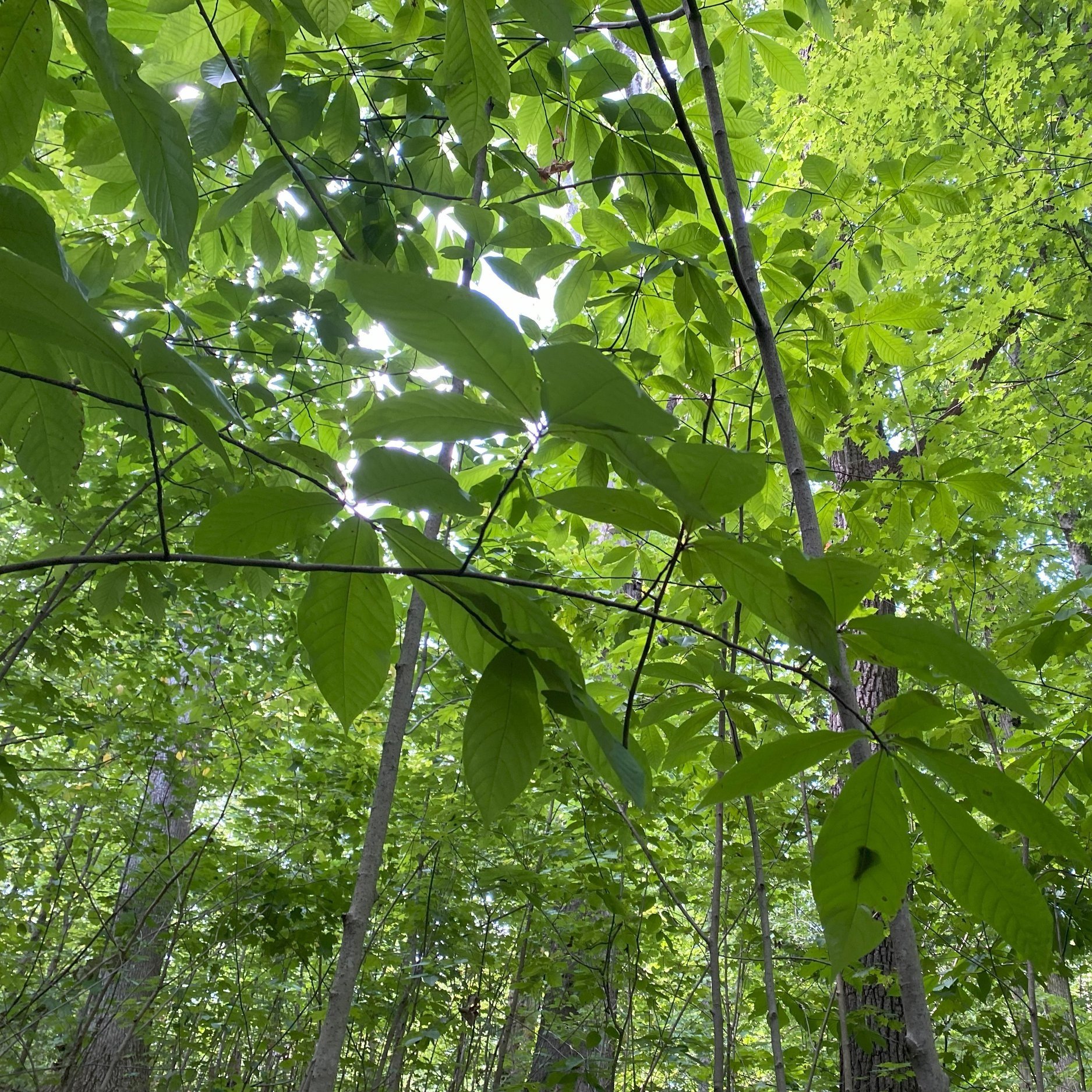 Image 1 of 3
Image 1 of 3

 Image 2 of 3
Image 2 of 3

 Image 3 of 3
Image 3 of 3




American Pawpaw Seeds
The pawpaw (Asimina triloba) is a native fruit tree of North America, known for its large, custard-like fruit with a flavor reminiscent of banana, mango, and melon. As the largest edible fruit indigenous to the U.S., it has long been valued by Indigenous peoples and early settlers as a seasonal food source.
This small, deciduous tree thrives in fertile gardens, shrub borders, or woodland hillsides forming groves where trees support one another. They are especially suited for damp areas along ponds or streams. In spring, deep purple flowers emerge before the leaves, attracting natural pollinators. By late summer to early fall, clusters of greenish-yellow fruit ripen, offering a sweet, fragrant harvest.
The pawpaw grows well in part shade to full sun, typically reaching up to 20 feet tall. Its broad, drooping leaves create a lush, tropical look in the landscape, turning bright yellow in the fall. While it requires patience to establish, the reward is a low-maintenance tree that provides food for both people and wildlife. With its rich history and unique flavor, the pawpaw is a valuable addition to any edible landscape.
Packet of 10 cold stratified seeds
The pawpaw (Asimina triloba) is a native fruit tree of North America, known for its large, custard-like fruit with a flavor reminiscent of banana, mango, and melon. As the largest edible fruit indigenous to the U.S., it has long been valued by Indigenous peoples and early settlers as a seasonal food source.
This small, deciduous tree thrives in fertile gardens, shrub borders, or woodland hillsides forming groves where trees support one another. They are especially suited for damp areas along ponds or streams. In spring, deep purple flowers emerge before the leaves, attracting natural pollinators. By late summer to early fall, clusters of greenish-yellow fruit ripen, offering a sweet, fragrant harvest.
The pawpaw grows well in part shade to full sun, typically reaching up to 20 feet tall. Its broad, drooping leaves create a lush, tropical look in the landscape, turning bright yellow in the fall. While it requires patience to establish, the reward is a low-maintenance tree that provides food for both people and wildlife. With its rich history and unique flavor, the pawpaw is a valuable addition to any edible landscape.
Packet of 10 cold stratified seeds
The pawpaw (Asimina triloba) is a native fruit tree of North America, known for its large, custard-like fruit with a flavor reminiscent of banana, mango, and melon. As the largest edible fruit indigenous to the U.S., it has long been valued by Indigenous peoples and early settlers as a seasonal food source.
This small, deciduous tree thrives in fertile gardens, shrub borders, or woodland hillsides forming groves where trees support one another. They are especially suited for damp areas along ponds or streams. In spring, deep purple flowers emerge before the leaves, attracting natural pollinators. By late summer to early fall, clusters of greenish-yellow fruit ripen, offering a sweet, fragrant harvest.
The pawpaw grows well in part shade to full sun, typically reaching up to 20 feet tall. Its broad, drooping leaves create a lush, tropical look in the landscape, turning bright yellow in the fall. While it requires patience to establish, the reward is a low-maintenance tree that provides food for both people and wildlife. With its rich history and unique flavor, the pawpaw is a valuable addition to any edible landscape.
Packet of 10 cold stratified seeds
These are packaged as 10 seeds that have been pre-stratified for a minimum of 120 days. They are ready to be planted for the germination process.
Growing Conditions
Soil Moisture Medium to Wet
Sun Exposure Full Sun to Part Shade
Height 15’ - 20'
Spread 15' - 20’
Bloom Time Apr to May
Hardiness Zones 5 - 9
